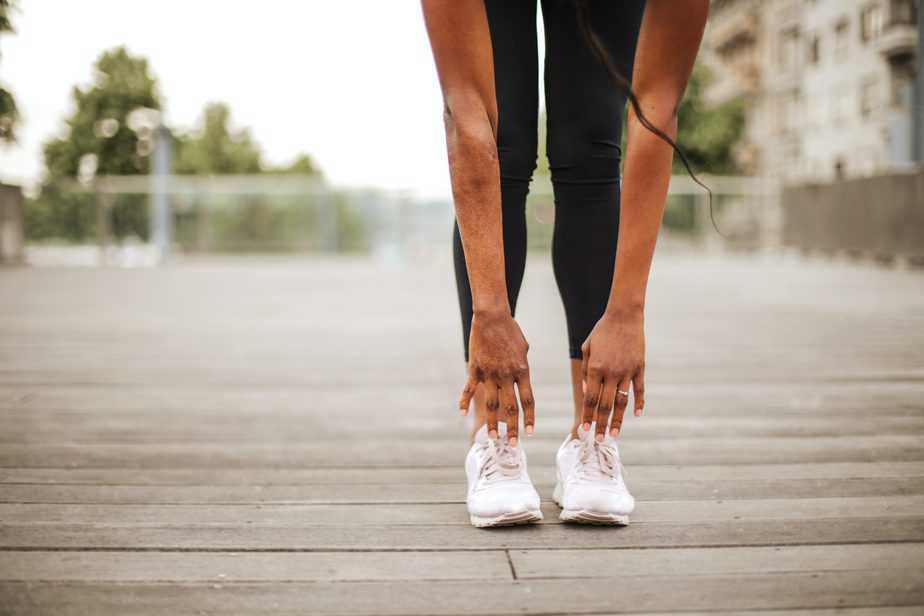Few things are worse than ending a dive for reasons such as needing to go to the bathroom, nausea, equalization problems, and the focus of this article: leg cramps. It’s frustrating because when it strikes, you can feel so helpless when your leg muscles suddenly seize up and tighten painfully. Even if you are aware that leg cramps can happen, it doesn’t always mean that you can prevent it, and so if it happens despite your best efforts anyways, it’s very frustrating. That said, maybe you haven’t yet tried some of the tips in this article.
How do you prevent leg cramps while scuba diving? The best way is to tackle the problem at its core by figuring out what causes cramps in the first place and dealing with them. The most common causes of leg cramps are: dehydration, improperly fitting fins, sudden physical exertion after a long dive break, and low potassium and magnesium levels in the body.
You should also stretch out your leg muscles prior to diving, and we’ll discuss some stretching exercises you can do. By following these tips, you are significantly less likely to get leg cramps while scuba diving.
Leg cramps can happen to any diver, regardless of age, sex, or experience. Some people are simply more prone to cramping up due to their lifestyle and diet, while others never had an issue with leg cramps. If you have a fear of your leg muscles cramping up suddenly during the dive, it can distract you and make you lose focus which is another safety risk. Let’s go over how you can solve this problem.
Why do my leg muscles cramp up in the first place?

Cramps can happen any time. You’ve probably had an experience where a calf cramp woke you up in the middle of the night, and you’re left to writhe in agony until it’s over. Sometimes the cramp is merciful and goes away on its own after a few seconds. Other times, it can last for minutes and it will feel like torture.
So what does this have to do with scuba diving? Well, muscles that are hard at work are more susceptible to cramps. Also, being dehydrated, not eating enough potassium and magnesium, and having tight muscles can contribute to cramping up. Since the legs are the most active part of the body during scuba diving, then it’s not a surprise that it’s the location where cramps occur.
Scuba divers most commonly experience muscle cramps in their calf area, but it can also occur in your toes as well. It might be so severe that your entire leg muscles, including your upper legs muscles, seizes up into paralyzing immobility. Obviously, this does not bode well when you’re underwater and can be anxiety-inducing. If you experience muscle cramps, just end your dive and recuperate on the boat.
Common causes of leg cramps while scuba diving
What else causes leg cramps besides overuse? We’ve narrowed it down to the following problems: dehydration, ill-fitting fins, sudden intense physical exertion after a long break, tight muscles from lack of stretching or a sedentary lifestyle, and low levels of potassium and magnesium in your diet. Let’s go over each problem in more detail.
Lack of hydration
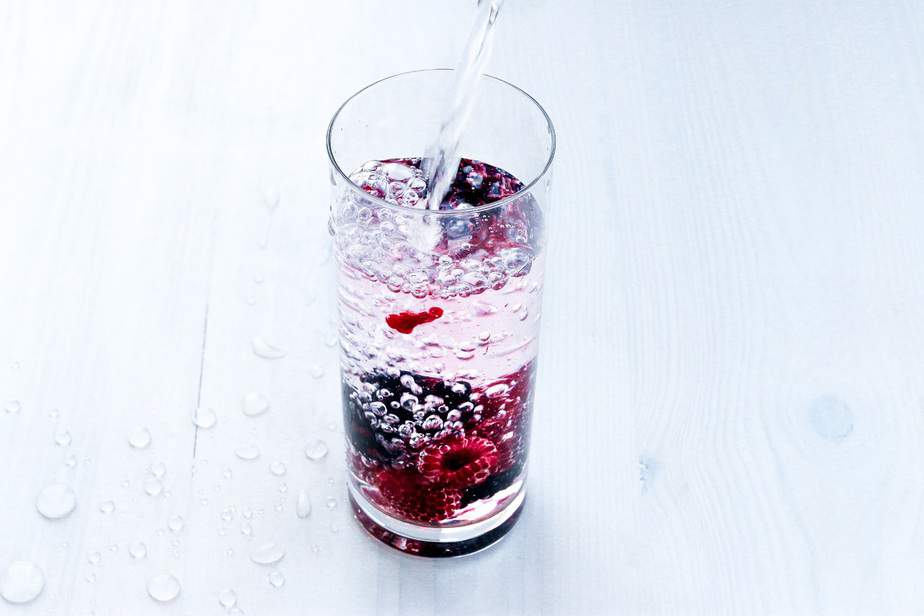
The Institute of Medicine’s water intake recommendations suggest that a healthy male adult should drink 101 oz (3.0 L) of water, and healthy adult females should drink 74 oz (2.2 L) of water per day. This is not including fluids from other beverages and food, so the total water intake should be more.
However, the average adult in America drinks about 39 oz (1.15 L) of water on a given day. That means they are getting the rest of their water intake from other sources, or they are simply dehydrated on a daily basis. Let’s use this as a reference point. How much water do you drink in a day? Chances are, you aren’t drinking enough water.
It’s very easy to get dehydrated while scuba diving because most people don’t eat or drink underwater. Think about it: you’re basically doing 45-60 minutes of physically demanding exercise and not hydrating yourself the whole time. Since you’re underwater, you might not notice it, but you’re also producing a lot of sweat and urine, which further dehydrates you.
When you’re dehydrated, your body is unable to function properly and this is especially dangerous to divers who are already doing a risky activity. For example, if your body is having trouble removing the dissolved nitrogen in your bloodstream, then you are at risk of decompression sickness (the bends). Another side effect is muscle cramps.
So now that you have a better understanding of why water is so important, don’t go and drink gallons of water before going on your next dive. A fine balance is required because, ironically, a low level of salt in your body from drinking too much water can also result in muscle cramps. Also, drinking too much water will make you pee a lot, which is fine to do, but maybe you find it disgusting.
Everybody’s water intake needs are different, especially because there is such a huge variance on one’s size, weight, activity level, and sex. For this reason, health authorities have found it difficult to give recommendations. However, since most people tend to be dehydrated, then if you know you will be diving soon, force yourself to drink slightly more water than usual to compensate.
Ill-fitting fins
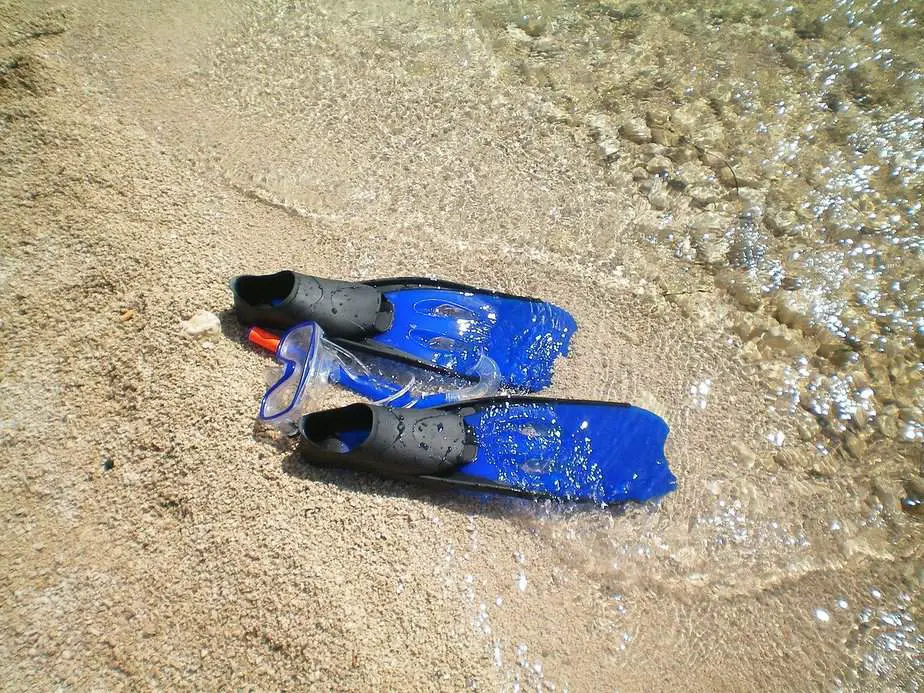
If your fins or dive booties are too tight, it can restrict your movement and blood flow. Conversely, if your fins are too loose, your positioning and movements might be very stiff so that you do not accidentally kick off your fins. This awkward, unnatural movement can result in cramps as well.
Poor-fitting fins are most commonly a problem if you are renting your gear instead of buying. Instead, consider buying fins of your own. Once you have found a pair of fins that fit your feet comfortably, you never need to worry about how well a pair of fins fit you ever again. Well, at least until you go shopping for the next pair.
What does a good fit mean? It means that your toes should be comfortable and not squished, and you should be able to maneuver your feet around normally without fear of it falling off.
In the case of ill-fitting fins, your calf muscles can get fatigued and overexerted from the awkward finning action you will be forced to do, and this can trigger leg cramps. Once again, there is a delicate balancing act – not too loose or too tight.
This is most commonly an issue when you are renting your dive gear. Scuba diving fins are arguably one of the first things you should buy along with a dive mask because of how important the fit is for both of these items. Just go through the hassle of getting the right fit once, and never deal with this problem ever again; your calf muscles will thank you.
Cold and tight muscles
If your muscles are tight to begin with, and they are not properly warmed up and then exposed to the cold water, then you are just asking for a leg cramp. You can get your muscles primed for exercise by stretching before your dive. This solves both problems – tight and cold muscles – in one fell swoop.
On top of that, stretching your calf and leg muscles on the onset of a cramp, or during a cramp, can help prevent it. Unfortunately, when you’re already underwater, it’s hard to stretch your muscles out. However, you can stretch your calf muscles by sticking the affected leg in front of you, grab the tip of your fin with one hand, pull back on the fin while holding your leg straight and rubbing the cramped muscle with your free hand until the cramp goes away. You may be able to alleviate the cramp or prevent it outright if you’re quick enough.
Once the cramp subsides, you have two options. Either you carefully continue the dive and hope that the cramp doesn’t return, or you can end the dive then and there. A muscle that has cramped up already is likely to cramp up again, so it’s best not to get your hopes up. If you experience the cramp again, signal to your dive buddy/tour guide that you’re returning to the boat.
Unfortunately, stretching out a cramp during a dive does not solve the underlying problem which is that your body is likely dehydrated, overexerted, or lacking in nutrition, so the cramp will likely come back. You’ll have to take it slow afterwards and consider ending the dive. The tips provided in this article need to be applied before you dive; there’s not much you can do once you’re in the middle of a dive.
Weak muscles
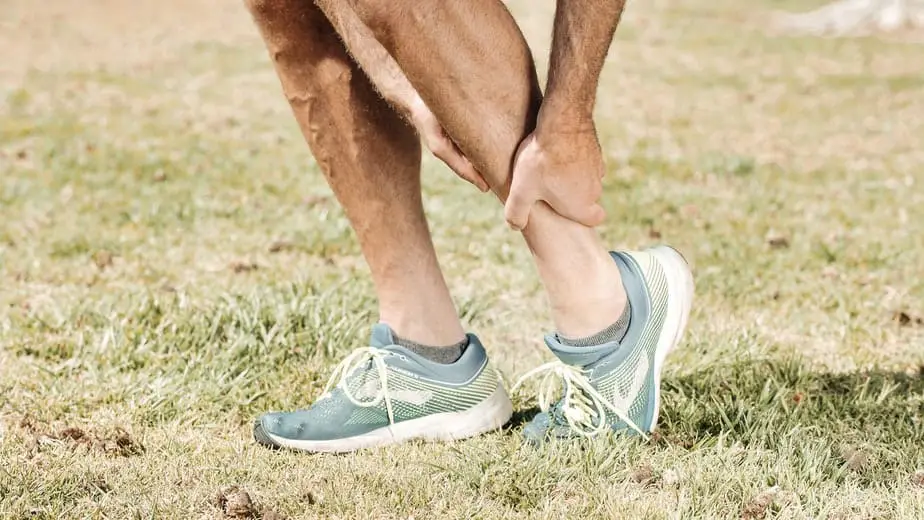
In a similar vein, if you are returning to diving after a long break, and you are not physically active in your daily life, then your muscles will easily get overused and this makes you more susceptible to cramps.
Scuba diving involves the intense use of your leg muscles primarily. There are multiple groups that comprise the leg: the feet, calves, hamstrings, quads, and glutes (buttocks). If you’ve studied anatomy, then you’ll know that within these muscle groups are even more individual muscles; each one of them is a potential location for a cramp to occur, though the most commonly affected area are the calves.
Sudden intense bursts, or prolonged use of these muscles, can also result in muscle cramps. The more often you dive (or remain physically active), the stronger your muscles will become, and this will help you to avoid cramps in the future.
Some ways you can train your leg muscles other than scuba diving are: resistance training, running, cycling, or swimming with fins on in the ocean or pool. Make sure to have adequate rest (e.g. one day off between training sessions) and nutrition (covered in the next section) while on a strict training regimen. You could easily overexert yourself and get cramps while training as well, which you want to avoid.
With all of the prep work needed to stay in shape for scuba diving, you’re going to be in great shape which is conducive to a healthy lifestyle. It also helps that scuba diving is also an incredibly good way to exercise, so you will keep those pounds off while enjoying your vacation.
Poor nutrition
A common cause of muscle cramps is due to a deficiency in potassium and magnesium in your diet. By eating foods high in these minerals, or taking supplements, you will find that your cramps will stop occurring.
Aren’t sure what kinds of foods you should eat? These are the the best food sources for potassium (source):

- Dried fruits (raisins, apricots)
- Beans, lentils
- Potatoes
- Winter squash (acorn, butternut)
- Spinach, broccoli
- Beet greens
- Avocado
- Bananas
- Cantaloupe
- Oranges, orange juice
- Coconut water
- Tomatoes
- Dairy and plant milks (soy, almond)
- Yogurt
- Cashews, almonds
- Chicken
- Salmon
These are the best food sources for magnesium (source):

- Almonds, peanuts, cashews
- Pumpkin seeds
- Peanut butter
- Beans (black, kidney)
- Soybeans, soymilk
- Cooked spinach, Swiss chard
- White potato with skin
- Brown rice
- Oatmeal (instant, whole oats)
- Salmon
- Beef
- Poultry
- Banana
- Raisins
- Dark chocolate (at least 70%)
- Milk, yogurt
As you can see, there are lots of foods to choose from, so even picky eaters will have something they like. What’s interesting are the food choices that appear in both lists. Some notable ones are: bananas, raisins, potatoes, dairy, beans, cashews, almonds and poultry. So these are a good way to kill two birds with one stone.
How to stretch your leg muscles to prevent and relieve cramps
In our experience, and speaking to other divers, the most common area to cramp up in is the calves or hamstring. Thus, the video below is a goldmine of excellent, actionable stretches you can do to relieve any tightness in your calves and increase your flexibility.
https://www.youtube.com/watch?v=PjQEjGvHjKQ
There are other great stretches you can do to stretch the rest of your leg muscles, such as:
Upper calf stretch
Stick both your arms straight in front of you and place the palm of your hands flat on a wall for support. Place one foot flat on the ground slightly in front of your body and bend a little at the knee. Place the other foot flat on the ground behind your body, with your back leg straight. The position should look like you’re trying to push the wall down.
In this position, the further behind your body you try to slide your foot while keeping it flat on the ground and the back leg straight, the more of a stretch you will feel in the calf muscles of that leg. Move your back leg to a position where you feel a good stretch in your calf muscle, hold it for 30 seconds, and then reverse the legs.
Lower calf stretch
From the same position described above, bend the back leg forwards while keeping the heel of your front foot on the ground. Hold this position for 30 seconds and then do the same for the other leg.
Toe pulls
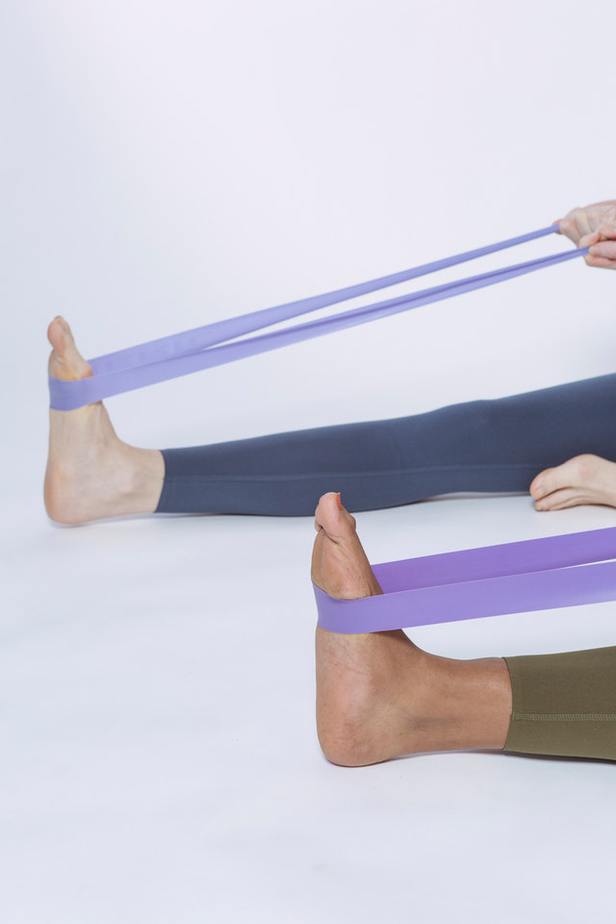
You’re going to need a towel or fitness band for this next stretch. Sit on the floor with your legs straight and your upper body straight. From this starting position, loop the towel/band around your toes and gently pull on the towel with your arms. Maintain constraint tension for 5-10 seconds and repeat 3 times for each foot.
Sitting toe touch
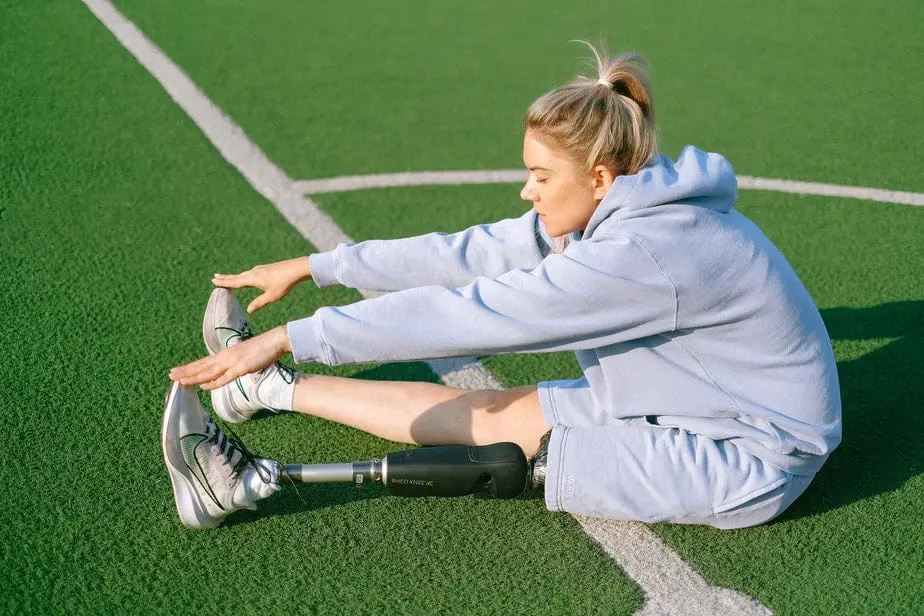
As you were setting up the band/towel for the above stretch, you likely felt a tug on your hamstrings. Well, that’s exactly what this next exercise is. You can get rid of the towel/band now and start from the same position as a toe pull. However, instead of using a towel to pull on your toes, you’re going to try to reach your toes with your hands.
If you are not flexible enough, you might not be able to reach your toes, but you will certainly feel a stretch in your hamstrings. It doesn’t actually matter if you touch your toes; as long as you feel the stretch in the hamstrings, hold it for 30 seconds.
Quad stretch
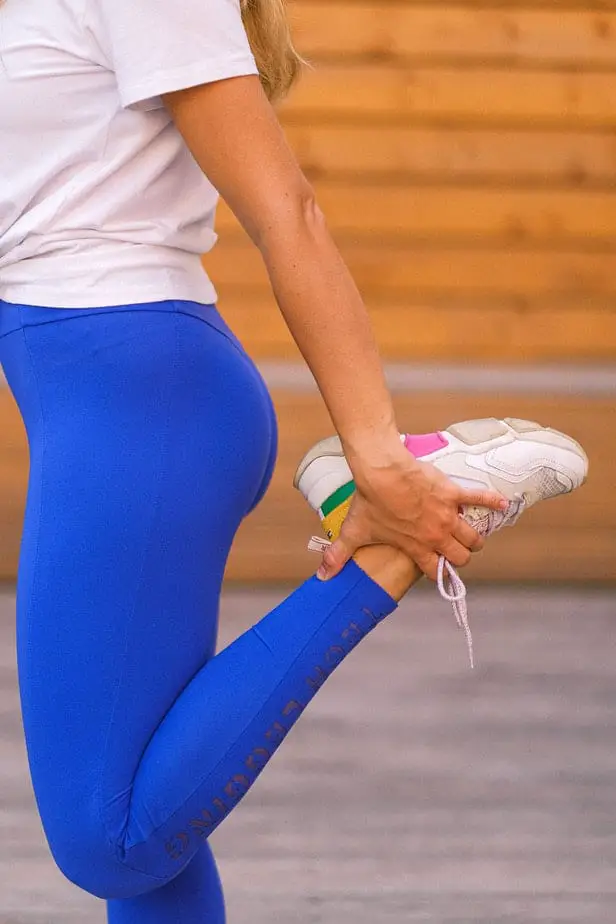
Stand in front of a chair, table, wall, or other supporting object. Stand up straight, start with your feet close together, place one hand on the supporting object, and bend one of your legs backwards as if you were trying to touch your butt with the heel of that foot. With the hand on the same side as the leg you’re bending, grab your foot and pull on it until you feel a stretch in your quads (the big muscles on the front of your legs). Hold for 30 seconds, and then repeat with the other leg.
Parting words
If your legs are prone to cramping up while scuba diving, the best method for prevention, aside from eating foods high in magnesium and potassium, is to build muscle strength, flexibility, and endurance. Conditioning your muscles prevents them from being overexerted. Your leg muscles can be strengthened through resistance training, running, cycling, or by swimming with fins in a pool or in shallow waters.
As you’ll soon learn if you’ve been training your legs, but the muscles can feel sore and tight after a workout. You can loosen tight muscles by doing the stretches outlined above. It’s important to stretch, because this helps increase the flexibility of the muscles and their range of motion. Stretching can also immediately relieve the pain of a muscle cramp should you start to experience one.
Furthermore, if you consistently experience muscle cramps in a specific area, and the tips provided in this article do not help, then you should see a doctor to see what’s wrong; perhaps you have a medical condition that is causing this problem.
Ultimately, cramps are not life-threatening on their own. However, experiencing a severe cramp that immobilizes you in the middle of scuba diving can be problematic. Thus, it’s in your best interest to prevent leg cramps while scuba diving, because this sport has enough risks already.

